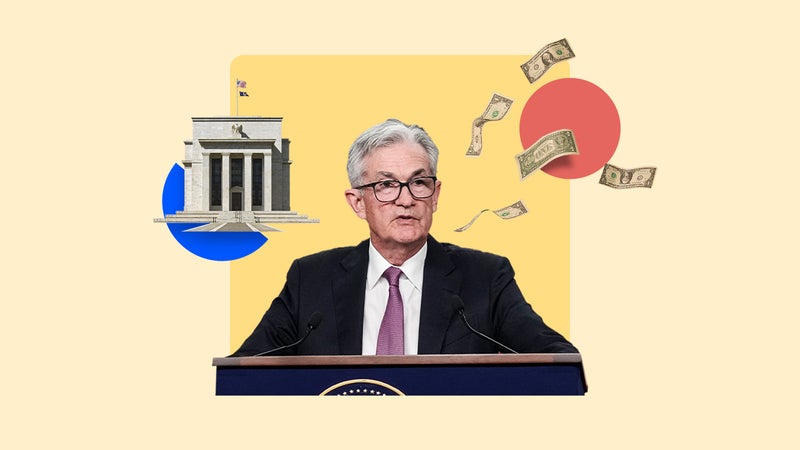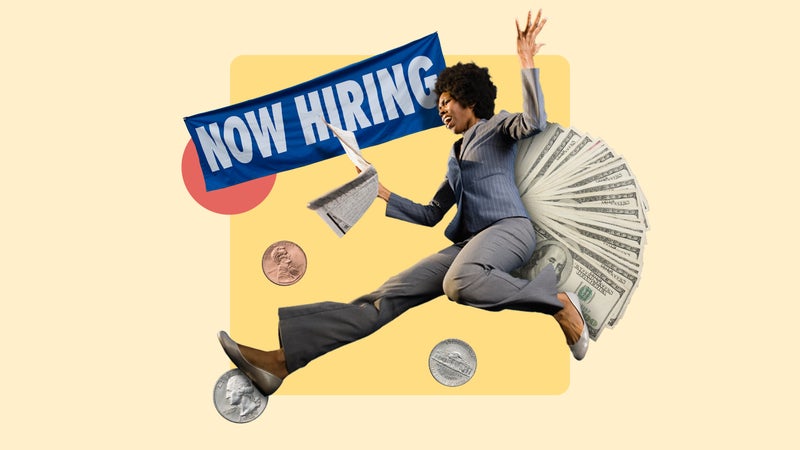Survey: Despite a resilient economy, experts still see a near 1-in-2 chance of a recession

The Bankrate promise
At Bankrate we strive to help you make smarter financial decisions. While we adhere to strict , this post may contain references to products from our partners. Here's an explanation for .
Investors, economists and even staffers at the U.S. central bank started 2023 expecting that a recession would be all but inevitable as the Federal Reserve attempted to wrangle the hottest inflation in four decades with just as historically rare a surge in interest rates.
They’re kicking off 2024 on a significantly more optimistic note.
Unemployment is hovering below 4 percent, the economy is continuing to grow at an above-trend pace as consumers keep spending, Fed officials are preparing to cut rates and — best of all — inflation is creeping closer to officials’ 2 percent target. The elusive and coveted “soft landing” of the overheated U.S. economy looks like it’s coming into view.
Even so, economists aren’t significantly downgrading their calls for a recession between now and December 2024. Those odds barely budged between the previous survey period, edging down slightly to 45 percent in Bankrate’s latest poll for the fourth quarter from 46 percent in the third-quarter poll.
Those odds are still better than they were at any point since the first quarter of 2022. But the odds are still about a coin-flip — suggesting that the U.S. economy might not be entirely out of the woods just yet.
The numerous risks facing the economy and the finances of households and individuals are close to home and far away, including the uncertainties in an election year and geopolitical troubles around the globe. Through it all, Americans will need to be focused on the long term for their personal finances.— Mark Hamrick | Bankrate senior economic analyst
Key insights on the economy from Bankrate’s fourth-quarter Economic Indicator poll
A recession: Off the table or just late to arrive?
The U.S. economy is contradicting the first lesson economists learn: Inflation and unemployment have an inverse relationship.
Anytime inflation falls, it should put upward pressure on unemployment — either because weak hiring has weighed on spending or because the Fed has had to slam the brakes on the economy.
But the U.S. economy has been contradicting those schools of thought. Inflation has fallen 6 percentage points since peaking at an eye-popping rate of 9.1 percent in June 2022. All the while, unemployment has held below 4 percent for 22 consecutive months, the longest stretch of time in nearly half a century.
Economists say that strong hiring and low unemployment have been a self-fulfilling prophecy for the economy avoiding a recession. Flush with stable paychecks, pandemic-era savings and pent-up demand, consumers are more inclined to spend the pennies they earn.
Since May, wages have been rising faster than inflation, a feature that’s also underpinning spending. Americans still have ground to recover; they’re on pace to fully close their loss of purchasing power by the end of this year, according to Bankrate’s Wage to Inflation Index. But it’s giving Americans the ability to keep spending, and it may mark the point when they start to feel better about prices.
The risks, however, are that these tailwinds won’t last forever. Americans aren’t saving as much as they used to, reflected by declining personal savings rates. In March 2021, Americans had stashed away 26.1 percent of their disposable personal income. Today, that figure is around 4.1 percent, more than 2 percentage points below its pre-pandemic level in 2019.
“The resiliency is mostly thanks to the staying power of the U.S. consumer powered by a tight labor market and higher real wages,” says Odeta Kushi, deputy chief economist at First American Financial Corporation. “Yet, the consumer faces notable headwinds in 2024: The excess savings cushion is deflating, while consumers face a growing need to repay credit card and student loan debt. These dynamics may dampen consumers’ ability to spend in 2024.”
The longer interest rates stay at this historically high level, the greater the risk that monetary policy could also start to weigh on spending. Take housing, for example. Americans whose families have grown or whose careers have changed might have no choice but to trade their sub-3 percent mortgage for a more expensive one near 7 percent.
That can take a significant chunk out of their budget. A $500,000 30-year fixed mortgage would’ve cost roughly $2,100 a month in principal and interest back when rates were at a record low of 2.93 percent, according to Bankrate’s mortgage calculator. That monthly payment would rise to nearly $3,300 — $1,200 extra dollars — with a 30-year fixed mortgage rate of 6.88 percent.
Meanwhile, borrowers with credit scores in the range of 501 and 600 may have a tougher time accessing credit as interest rates stay high.
“While we have pushed back the starting date for this slowdown, the combination of restrictive monetary policy and tighter credit conditions are still apt to slow the economy abruptly in the year ahead,” says Mike Fratantoni, chief economist at the Mortgage Bankers Association.
Here’s what the nation’s top economists are saying about recession risks
“A recession is likely avoided, but consumer spending cannot keep marching strongly in light of student debt repayment, lighter job additions, and having covid stimulus largely used up.”
— Lawrence YunChief Economist at the National Association of Realtors
“There is a 75 percent chance of a mild recession, a 10 percent chance of a severe recession and a 15 percent chance of a soft landing (no recession).”
— Bernard MarksteinPresident and Chief Economist Markstein Advisors
“The resiliency of the U.S. economy may decline in the first half of 2024, as pent-up consumer demand fades — especially in the wake of high credit card rates — and if geopolitical tensions impact various aspects of the U.S. economy.”
— Nayantara Hensel, Ph.DChief Economist at Seaborne Defense
-
The Fourth-Quarter 2023 Bankrate Economic Indicator Survey of economists was conducted Dec. 11-18. Survey requests were emailed to economists nationwide, and responses were submitted voluntarily online. Responding were: Mike Fratantoni, chief economist, Mortgage Bankers Association; Odeta Kushi, deputy chief economist, First American Financial Corporation; Nayantara Hensel, Ph.D., chief economist, Seaborne Defense; Yelena Maleyev, senior economist, KPMG US; John E. Silvia, founder, Dynamic Economic Strategy; Gregory Daco, chief economist, EY; Scott Anderson, chief U.S. economist, BMO; Dante DeAntonio, senior director, Moody’s Analytics; Lawrence Yun, chief economist, National Association of Realtors; Bernard Markstein, president and chief economist, Markstein Advisors; Robert Frick, corporate economist, Navy Federal Credit Union; Bill Dunkelberg, chief economist, NFIB; Joseph Mayans, director of U.S. economics, Experian; Sean Snaith, director, Institute for Economic Forecasting, College of Business at the University of Central Florida; and Mike Englund, chief economist, Action Economics.


